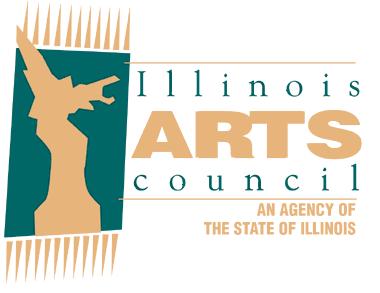NSCS, March 2006
PROGRAM NOTES
By Donald Draganski
"Brahms and waltzes! The two words
stare at each other in positive amazement on the elegant title-page.
The serious, taciturn Brahms, North-German, Protestant, and unworldly
as he is, writes waltzes!"
Thus the words of the Viennese critic
Eduard Hanslick, as he reacted with delight to the composer's earlier
set of waltzes for piano duet, op. 39. Hanslick's comments are
a bit disingenuous when one considers that waltzes, particularly
those produced by the Strauss family, were universally loved by
the Viennese, and at all levels of society. Even Wagner, who looked
upon any contemporary composer as a potential rival, had high words
of praise for the dances of Johann Strauss. Brahms's own feelings
were clearly shown at a ball he was attending. Strauss's wife,
Frau Adele, asked him to autograph her fan. Brahms wrote out the
opening notes of the Blue Danube Waltz , followed by the
words, "unfortunately not by Brahms." That is high praise indeed.
In 1879 Brahms published his Liebeslieder-Waltzer. At
the time he was composing them, he was also engaged in editing
some of the dance music of Schubert, particularly his Ländler,
and one can hear echoes of the earlier composer's music. The texts
that Brahms chose consist of eighteen Eastern European folk poems,
drawn from a collection of poems called Polydora by Georg
Friedrich Daumer (1800-1875). Although Brahms deferred to his publisher
to have the set published as a piano duet "with optional chorus," there
is little doubt that the composer intended it as a vocal work from
the start. The piece works just as well with a solo quartet as
with a full chorus, depending on its venue, whether as chamber
music or in a concert hall.
***
Much of what we know about the more
profane aspects of Medieval life comes to us from the manuscript
of Carmina Burana ("Songs of Beuren") which was discovered
at the monastery of Benedikbeure n in
1803 and published in 1847. This collection of poems was probably
written and collected around 1230 in Carinthia (now Kärnten,
the area around Salzburg and eastern Bavaria). It includes moral-satirical
poems, love poems, and poems of camaraderie and drinking. These
verses were written variously by foot-loose monks, out-of-work
clerics, and hell-bent students. The members of this motley crew
called themselves the Ordo Vagorum (Guild of Wanderers) and fabricated
as their founder and patron saint an imaginary individual called
Golias. "These Goliards," fulminated the Council of Salzburg in
1281, "go about in public naked, lie in bake ovens, frequent taverns,
games, harlots, earn their bread by their vices, and cling with
obstinacy to their sect." More to the point, many of the poems
of these self-styled Goliards are mocking in tone and are brutally
frank in pointing out the defects and injustices of the Medieval
Church and State; thus it is not surprising that the Goliards frequently
ran afoul of those in authority.
Although Carmina Burana is
an unabashedly secular work, one senses the pervasive presence
of the Medieval Church hovering behind the caprine verses, for
irreverence is pointless without Faith. As G. K. Chesterton says, "Wherever
you have belief you will have hilarity, where you have hilarity
you will have some dangers."
Carl Orff (born 1895 in Munich,
died there in 1982) chose twenty-four of the poems for his scenic
cantata. Its complete title is : Carmina Burana: Cantiones
profanae cantoribus et choris cantandae comitantibus instrumentis
atque imaginibus magicis ("Songs of Beuren; Profane Songs
to be Sung by Singers and Chorus, and Accompanied by Instruments
and Magical Images"). Orff began work on the piece in 1935 and
completed it in time for its premiere two years later in Frankfurt.
The work was originally staged as a Medieval mystery play, with
costumes, dancing and pantomime.
The Cantata opens with the Fortuna
chorus, describing fate as a wheel that brings cruelty and prosperity
by turns. This is followed by the section entitled Primo Vere (In
Springtime), a sound-picture of the season of rebirth. Within the
Spring section are the dance scenes Uf dem Anger (On the Lawn),
which incorporate actual Bavarian folk dances.
After the peasant Spring feast comes
In Taberna (In the Tavern), the most theatrical and orgiastic part
of the work, with singers singing drunken psalmody in falsetto
voices, parodying the excesses of Italian opera.
The opening of Part Three, Cour
d'Amours (The Court of Love) has a freshness and directness that
contrasts with the sensuality of the preceding section. The dance-song "Tempus
est jocundum" leads into the Dionysiac Blanziflor et Helena , an
appeal to Venus, the Goddess of Love. The work closes with a repeat
of the Fortuna chorus.
Today's performance presents the
work in concert version, with Orff's orchestra reduced to two pianos
and percussion - a reduction the composer himself authorized for
scaled-down performances.
As a postscript, let me relate the
circumstances surrounding a performance of Carmina presented
a few years ago at a fundamentalist Southern college that I shall
refrain from naming. The music students there were considerably
more worldly than were the more pious members of the administration,
and naturally the choristers were quite aware of what the piece
is all about. Through a convenient and carefully engineered "misunderstanding" at
the print shop, the English translation inserts for the program
were not ready in time for the performance. Deluded by the respectable-sounding
Latin and its association with church liturgy, the profoundly devout
audience sat through the performance, insensible to the revels
lurking behind the words. Afterwards, the rectors complimented
all concerned on the fervor and uplift of the performance. A good
time, as they say, was had by all.
Copyright © 2005 by Donald
Draganski


